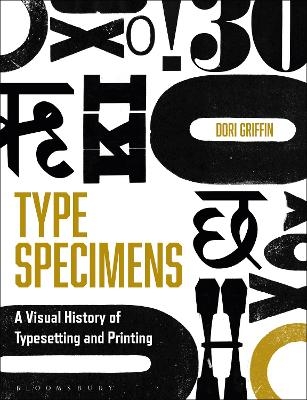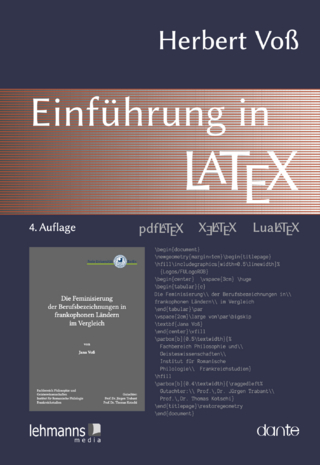
Type Specimens
Bloomsbury Visual Arts (Verlag)
978-1-350-11660-3 (ISBN)
- Titel ist leider vergriffen;
keine Neuauflage - Artikel merken
This richly illustrated book guides design educators, advanced design students, design practitioners, and type aficionados through four centuries of visual and trade history, equipping them to contextualize the aesthetics and production of type in a way that is practical, engaging, and relevant to their practice.
Fully illustrated throughout with 200 color images of type specimens and related ephemera, the book illuminates the broader history of typography and printing, showing how letterforms and their technologies have evolved over time, inspiring and guiding designers of today.
Dori Griffin is an assistant professor in the School of Art + Design at Ohio University, where she teaches graphic design and design history. She earned her MFA in graphic design from the University of Florida and her PhD in design history from Arizona State University. Griffin’s primary research centers around the history of popular visual culture and the role that type and image play in creating cultural identity.
Introduction
1: Early Broadsides
Early broadsides: form and function
Pragmatic beginnings - the Ratdolt specimen of 1486
Patterns of circulation
Multi-tasking - specimens serving multiple purposes
Broadsides: a lasting form
2: Printers’ Manuals
Printers' manuals: form and funtion
Shaping print culture
Establishing shared knowledge and expectations
Expanding typographic options
Standardizing printing vocabularies
Expressing visual styles
Evolving tastes
Conclusion
3: Foundry Specimen Books
Formats and functions
Comprehensive documentation
Elaborate display
Commercial utility
Stylistic instruction
International circulation
Missionary zeal
Centers and peripheries
Conclusion
4: Industrial Methods and Materials
Tools for economizing
Saving time, materials and money
Standardization of form
Organizational redesign - ATF's example
Tools for mechanization
Reproduction - electrotyping and the pantograph
Experiments with machine casting and composition
Wood types as "new" tools
An American (?) invention
Advantages of wood type
Advertising at large scale
Conclusion
5: Hot Metal
Hot metal: how and why
Benefits
Drawbacks
New formats for the specimen
Mega-books
Loose-leaf binders and supplements
1-line specimens
Roles of the specimen
Commercial catalogs
instruction manuals
Display devices for "good" mechanical type
Differentiation and cooperation
Programmatic world views
Conclusion
6: Ephemera
New formats
Supplements to binder systems
Leaflets and brochures
Emerging aesthetic trends
Revisiting history
Defining modernity
Networks of circulation
Imports, exports and adaptations
Cultural specificity and stereotyping
Local, specific, and vernacular forms - Cyrillic and Hebrew
Conclusion
7: Photographic and Binary Processes
Phototype: "inherently superior"
"Swift & Exact": how phototypesetting works
Typography, dematerialized
Attitudes toward technology
Inferiority - "the hand is the guide"
Innovation - "interesting possibilities"
Multiplicity - "for case, matrix, and film"
Conclusion - toward a digital future
Postlude: Digital Type, Diverse Futures
Bibliography
Image Credits
Index
| Erscheinungsdatum | 28.01.2022 |
|---|---|
| Zusatzinfo | 200 color illus |
| Verlagsort | London |
| Sprache | englisch |
| Maße | 189 x 246 mm |
| Gewicht | 886 g |
| Themenwelt | Kunst / Musik / Theater ► Design / Innenarchitektur / Mode |
| Kunst / Musik / Theater ► Kunstgeschichte / Kunststile | |
| Informatik ► Grafik / Design ► Desktop Publishing / Typographie | |
| Sozialwissenschaften ► Kommunikation / Medien ► Journalistik | |
| Wirtschaft | |
| ISBN-10 | 1-350-11660-2 / 1350116602 |
| ISBN-13 | 978-1-350-11660-3 / 9781350116603 |
| Zustand | Neuware |
| Haben Sie eine Frage zum Produkt? |
aus dem Bereich


